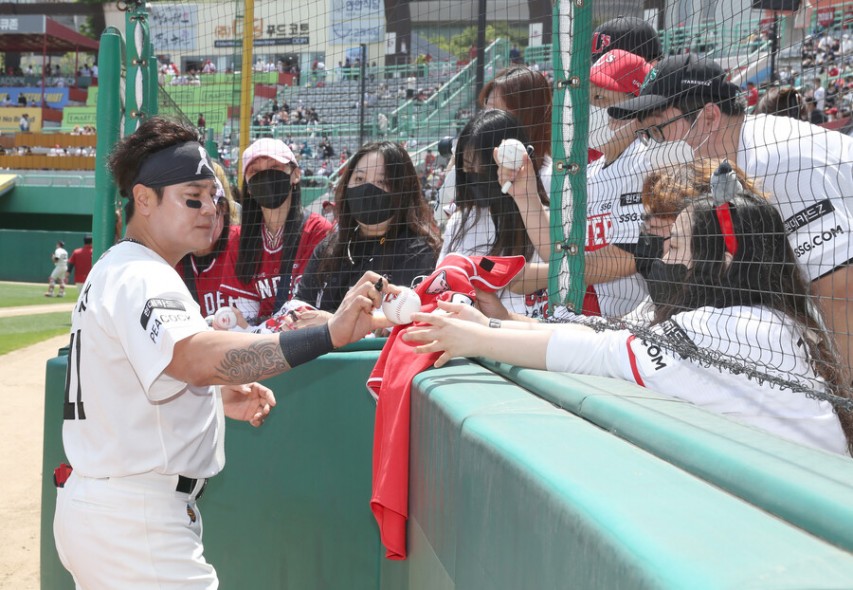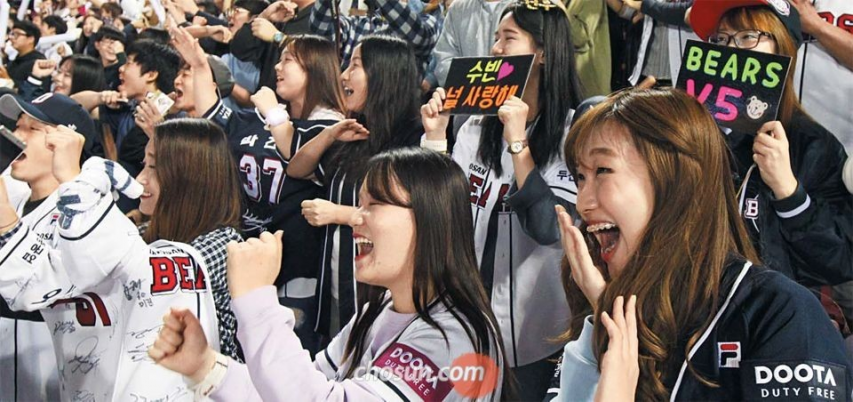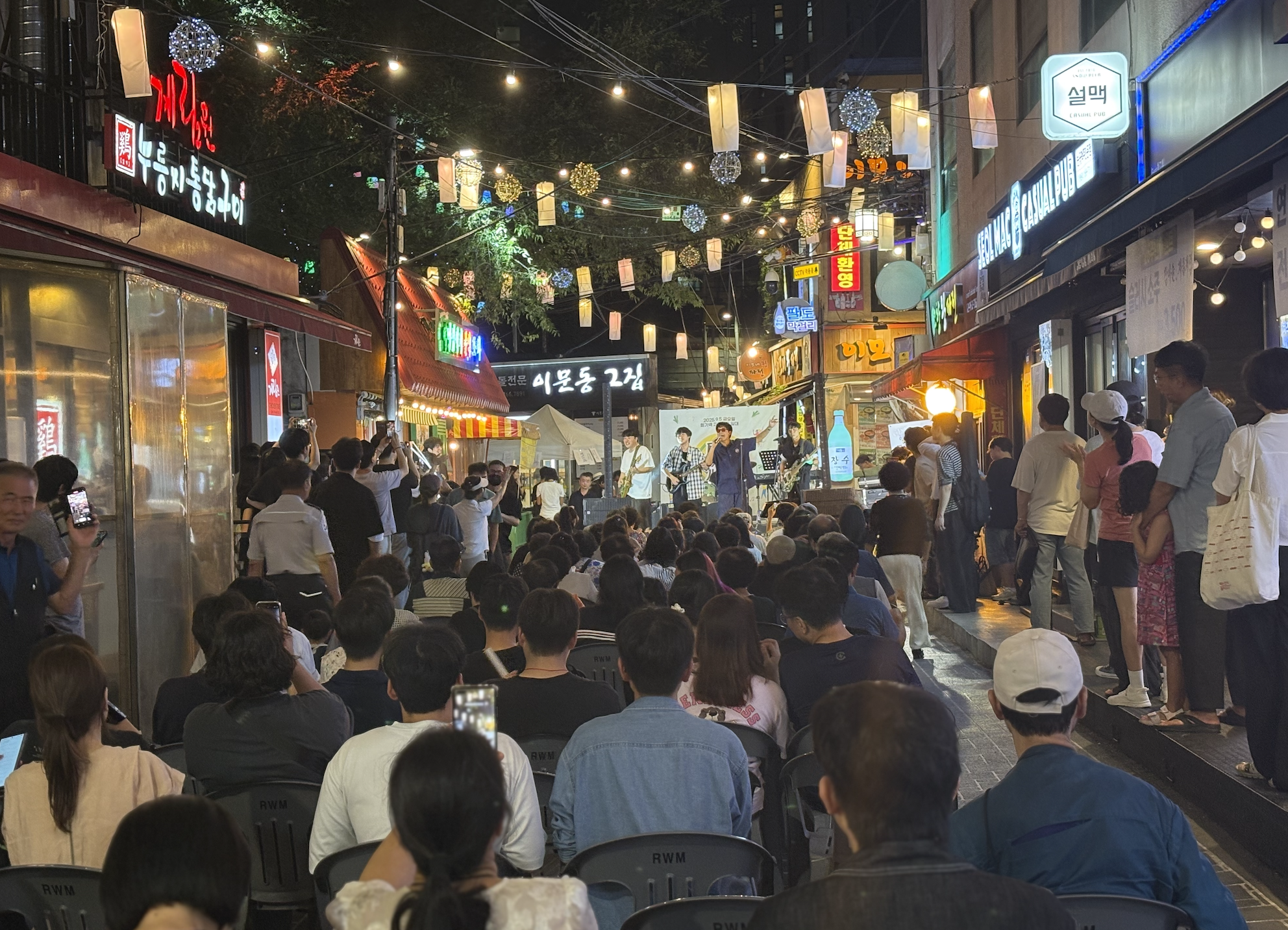[Culture] The Driving Force Behind the 2024 Baseball Trend: Women in Their 20s and 30s
Female fans cheering at the baseball stadium
Photo: The Chosun Ilbo (chosun.com)
Baseball has long been one of South Korea’s most popular sports, and 2024 marked a milestone in its history. For the first time since its inception, the Korean Professional Baseball League (KBO League) attracted more than 10 million spectators in a single season. What is surprising is that the driving force behind this success was women in their 20s and 30s. Unlike in the past, when baseball was seen as a pastime primarily enjoyed by men, it has now established itself as a cultural trend among young women. This new wave of female fans is transforming both the atmosphere in stadiums and the broader culture surrounding KBO League.
The Popularity of KBO League Among Women in Their 20s and 30s
Recently, the proportion of female spectators in their 20s and 30s has risen dramatically. According to the Korea Baseball Organization, ticket purchases by women in this age group increased by around 10% compared to 2023. In the first half of the season alone, women accounted for 54.4% of ticket buyers—more than half of the total. The New York Times noted that this trend contrasts with other baseball-loving countries, such as the United States and Australia, where the sport remains more male-dominated. The surge of young female fans in South Korea can be attributed to female-friendly marketing strategies and Korea’s unique fandom culture.
The Cause of the Trend: Female-Friendly Marketing
Korean baseball teams have focused on developing marketing strategies that appeal to women. Teams have launched various products aimed at younger fans and set up photo zones tailored to their interests. One notable example is the LG Twins’ collaboration with a popular webtoon among young women. The collaboration showed immediate success, with the special edition uniforms selling out on the first day.
Promotional efforts extend beyond the games themselves, including the viral spread of cheerleading videos. Professor Kim Ro-han from Kyung Hee University (KHU) Graduate School of Technology Management’s Dept. of Sports Management remarked, “The unique cheers and chants of each team have become their own form of content, providing enough reason for people to come to the stadium.” These cheering cultures have rapidly spread on social media through short-form content, attracting widespread attention—a phenomenon rarely seen in other countries with strong sports cultures. By promoting non-sporting entertainment elements, teams have drawn in consumers who did not have interest in baseball before.
The Cause of the Trend: Adoption of Fandom Culture
In addition to female-friendly marketing, Korea’s distinct fandom culture has played a key role in the increase of female baseball fans. The New York Times highlighted that Korean female sports fans often follow their favorite players across the country, noting similarities to K-pop fandoms. The concept of fandom, originally centered on celebrities, has expanded to include sports teams and players.
Unlike the often-distant idol fandom culture, where approaching the star is extremely difficult, baseball fan culture is more intimate. Fans can interact directly with players after games, receiving autographs or other forms of fan service. Teams also host a variety of fan-centered events, using social media as a powerful means to foster closer connections between players and fans. Prof. Kim explained, “Social media marketing, which conveys the personal stories of team players, has resonated with women in their 20s and 30s, who are already accustomed to idol fan culture.” The rise of star player fandom, driven by performance and appearance, has also spread across social media, with a growing number of female fans regularly sharing photos of their favorite players.
Other factors contributing to this trend include the belief that baseball is an affordable leisure activity. With average ticket prices ranging from 9,000 to 20,000 won for regular seats, baseball is often seen as a cheap hobby compared to other hobbies like going to the movies. Additionally, popular entertainment programs like “A Clean Sweep,” featuring retired baseball stars, have made people feel nostalgia, further contributing to the growth of female baseball fans.

Fans recieving autographs from player
Photo: Spotv News (spotvnews.co.kr)
The Impact of This Trend on Baseball Culture
The trend is already bringing significant changes to the baseball industry and culture, with more transformations expected in the future. These shifts go beyond merely expanding the spectator base; they encourage more active fan participation. Prof. Kim noted that while past female-friendly marketing focused on drawing attention and curiosity, today’s strategies aim to foster long-term fan engagement by creating enjoyable experiences at the stadium. Teams are enhancing the stadium experience by offering various entertainment options through pop-up stores and interactive marketing activities, ensuring fans leave with positive memories.
Changes in the baseball stadium environment have also been observed. For example, baseball teams like SSG Landers and KT Wiz have introduced special seating areas with camping and barbecue themes, while some stadiums feature machines that let fans collect player photo cards—catering to the growing player-specific fan culture. Kang Yoo-ri, a member of KHU’s baseball watching club, Lookhin’, stated that “Since I started attending baseball games in 2017, I have noticed more women spectators waiting after games for player autographs.” Another member, Son Yeon-ji, mentioned that with the increase of female baseball fans, cheer songs sung in the stadium have shifted from group chants to more dance-oriented and cute cheers that women might more prefer.
The growing popularity of KBO League among women in their 20s and 30s goes far beyond sports viewership, emerging as a cultural trend. What was once a sport with a largely male following has gained immense popularity among women, transforming baseball into a key part of social activities and fan communities. This shift is not only a change in audience demographics but also a redefinition of the entire fan experience when visiting the stadium. As a result, further changes are expected in Korean baseball culture, and teams must continue to adapt to this evolving trend.
There are no registered comments.
- 1
- 2
I agree to the collection of personal information. [view]




